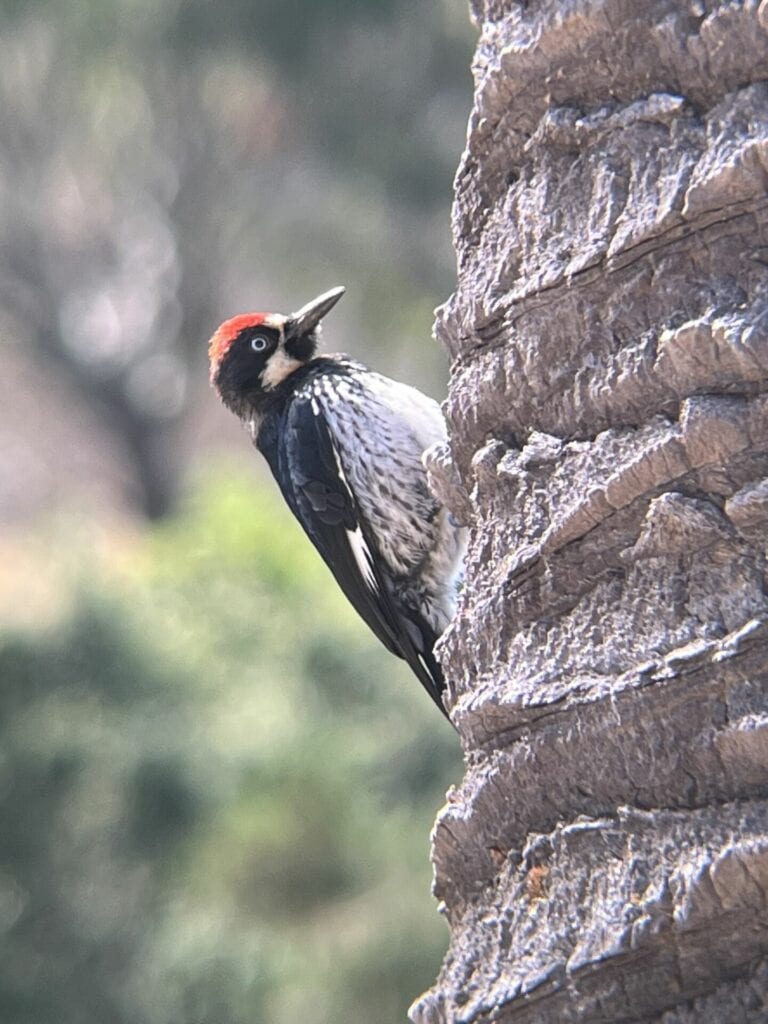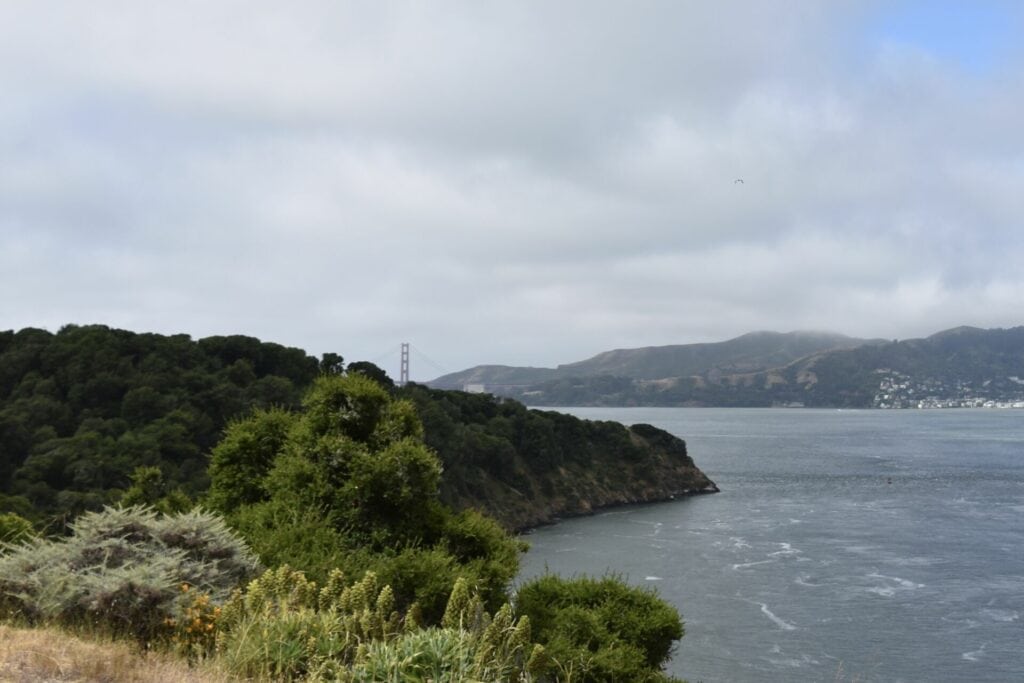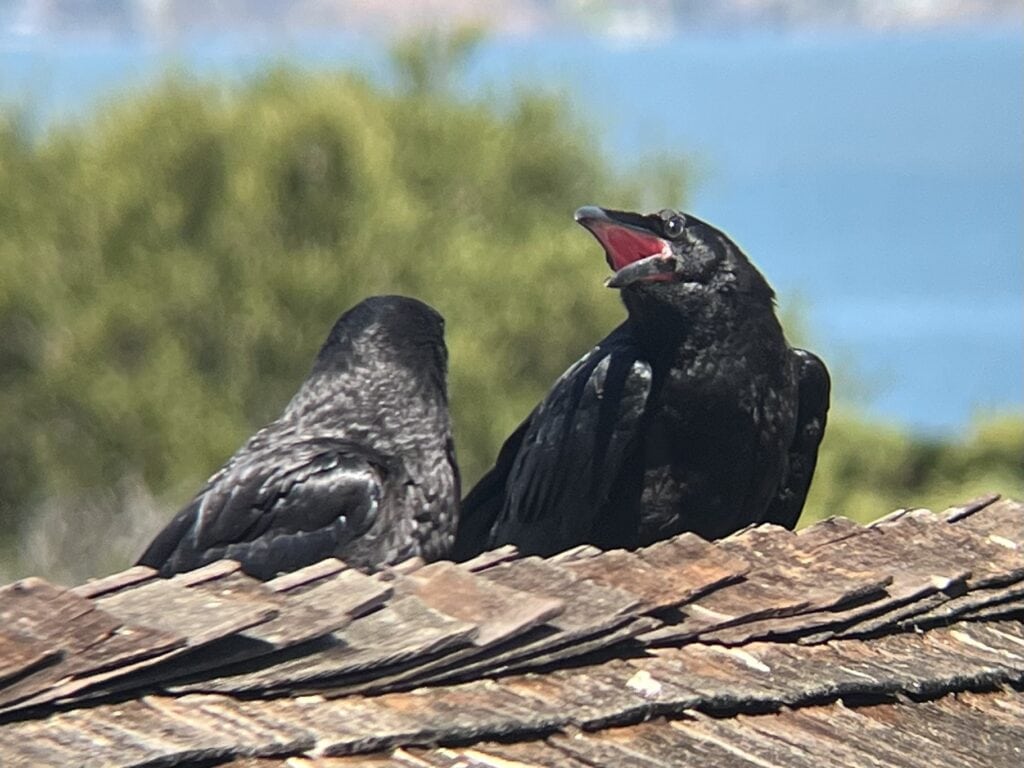Birding the Bay Islands: Thriving in Angel Island’s diverse habitats
By Helen J. Doyle and Evan Weissman
We met at 6:30, as we agreed the night before. The sky was already light, a week before the summer solstice, though a layer of ocean fog gave everything a slightly hazy outline and dulled gray tone. June gloom. Summer on the San Francisco Bay. We parked where the road had been washed out by winter storms, listening for birds in the light morning breeze.
We passed through oak woodlands and coastal scrub/chaparral habitats. Further along, a small grove of coast redwoods, planted a hundred years ago or more. All these habitats on a small island in the San Francisco Bay. We took a few steps, stopped and listened again, peering into the scrub for a flash of color or motion in the muted light. We heard one, two, three birds, several different species, on one side of the trail and then the other. Quietly, patiently, we listened.
Angel Island has at least seven distinct habitats for its avian life, packed into one square mile: oak woodland, coastal scrub/chaparral, introduced Eucalyptus and Monterey Pine, a small Redwood grove, shoreline, and of course the surrounding bay waters and sky above. For those new to birding, the Island offers the chance to see a diversity of birds on easy walks through varied habitats (don’t forget to bird from the ferry!).


Angel Island may delight experienced birders too. While none of these habitats are unique to the island, the type and number of birds differs from what you might see elsewhere. The oaks appear to support more Acorn Woodpecker families than a similarly sized woodland would elsewhere, perhaps because the birds are not competing with squirrels, who don’t live on Angel island. There are no California Towhees, common in the Bay Area, but there may be more Spotted Towhees than expected, perhaps due to reduced competition from their California Towhee relatives. And there seem to be more Pygmy Nuthatches. It’s unclear why the island has so many of these adorable birds, but we certainly aren’t complaining! Angel Island has surprisingly few shorebirds, perhaps due to a lack of healthy mudflats or tide pools, although one spotted sandpiper is often seen on its own, doing its characteristic butt-pump. And as opposed to Alcatraz–the Bay’s most infamous island–there are almost no waterbirds nesting on the ground or in shrubs, since Angel Island has rats, raccoons, and coyotes, mammalian predators that are absent from Alcatraz.
Angel Island’s diverse ecology has a long relationship with humans, who have lived in the area ever since the last ice age, when sea levels rose leaving a mountain poking above the water as the largest natural island in the bay. For thousands of years, Coast Miwok lived and hunted on the island, likely introducing fire to shape the landscape with cultural burns. During the mission era, the Coast Miwok were forcibly removed, many to Dolores Mission where they were met with disease and oppressive labor conditions. The island then became home to a Mexican cattle ranch, several U.S. army bases, and a U.S. immigration station, before becoming a state park in the 1950s. (All but a corner of Angel Island is in Marin County, with just a small unmanned Coast Guard station designated as part of San Francisco). For the past 50 years, the California State Park system has been nursing the island back to a healthier ecosystem, removing non-native trees introduced by the army and even rebuilding the top 16 feet of Mt. Livermore which had been shaved flat for Nike Missile radar equipment. Visitors can now explore miles of paved, gravel, and dirt trails through the island’s diverse habitats, taking in sweeping views of the bay, and of course looking for birds.

On our early morning June walk, we–that is, mostly Evan–identified 22 species, half by vocalizations alone, since birds were hard to spot in the early morning light. The previous day we identified 24 species in a short three-quarter mile walk starting at the ferry dock. In his two and a half years as an Angel Island State Park employee, part-time island resident, and volunteer with the Marin County Breeding Bird Atlas, Evan identified well over 100 bird species, and found evidence of over 30 species breeding on the Island. (Search for Block 17-13 on the MCBBA Data Explorer for historic and current counts of birds breeding on Angel Island).

Whatever the season, birding on Angel Island offers many delights: the ferry ride, San Francisco’s skyline framed by nature, the close proximity of diverse habitats, and the many birds they support. The best time to hop on a ferry and visit is whatever day you’re there!

Helen J. Doyle is a California Naturalist and educator dedicated to the environment, public education, and equity and justice. A biologist by training, she shares her love of nature as a docent and writer. She volunteers with several Bay Area organizations, such as Año Nuevo State Park, the Gardens of Golden Gate Park, and the Amah Mutsun Land Trust, and serves on the advisory council of Nature in the City, a San Francisco nonprofit that connects people to nature. (Helen on LinkedIn)
Evan Weissman is an interpreter of natural and cultural history, and of the connections between the two. He currently works at Olompali State Historic Park, and volunteers with Año Nuevo State Park, Golden Gate Bird Alliance, the Marin County Breeding Bird Atlas, and the Morro Bay Bird Festival. Evan is a certified California Naturalist and Climate Steward. (Evan on LinkedIn)
